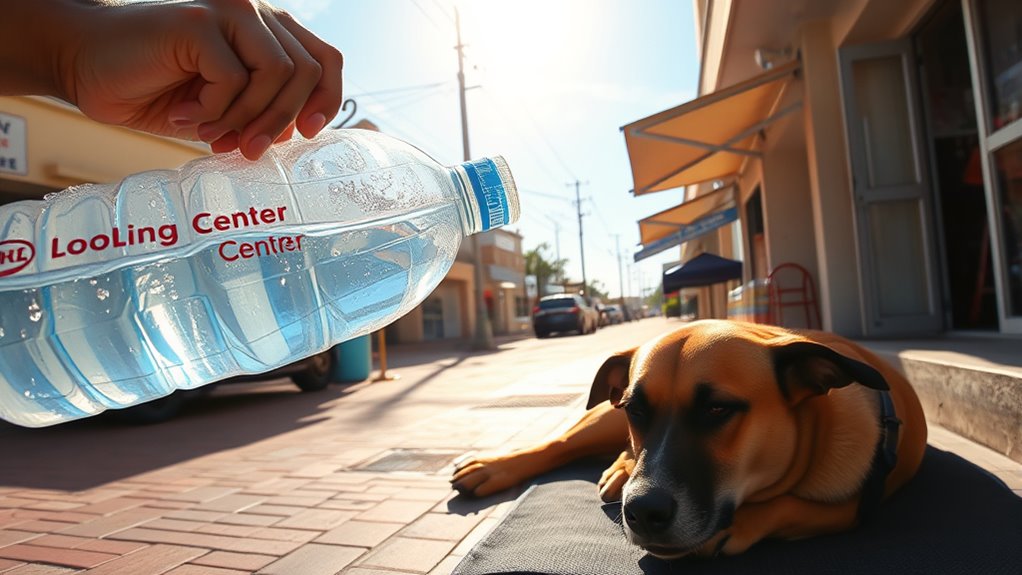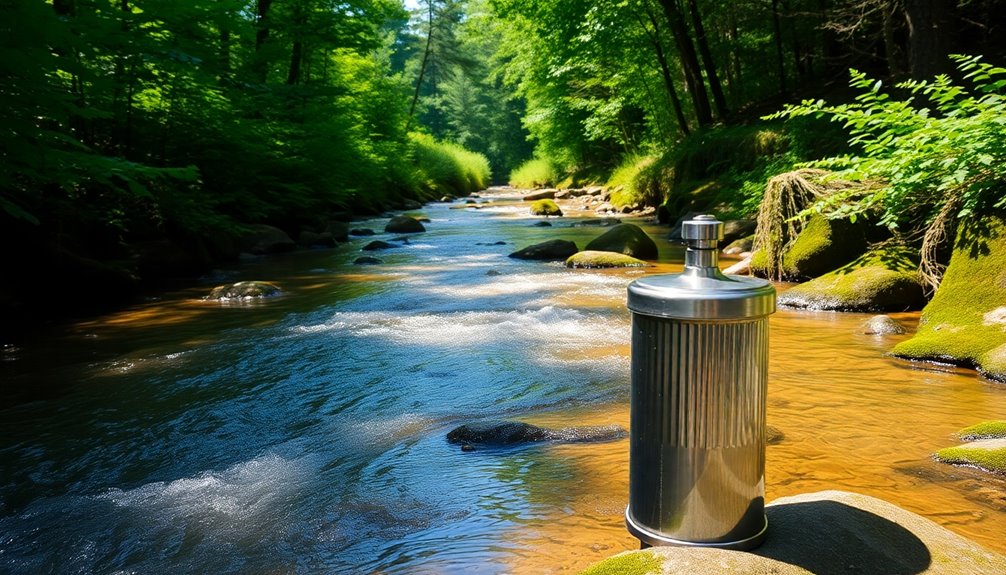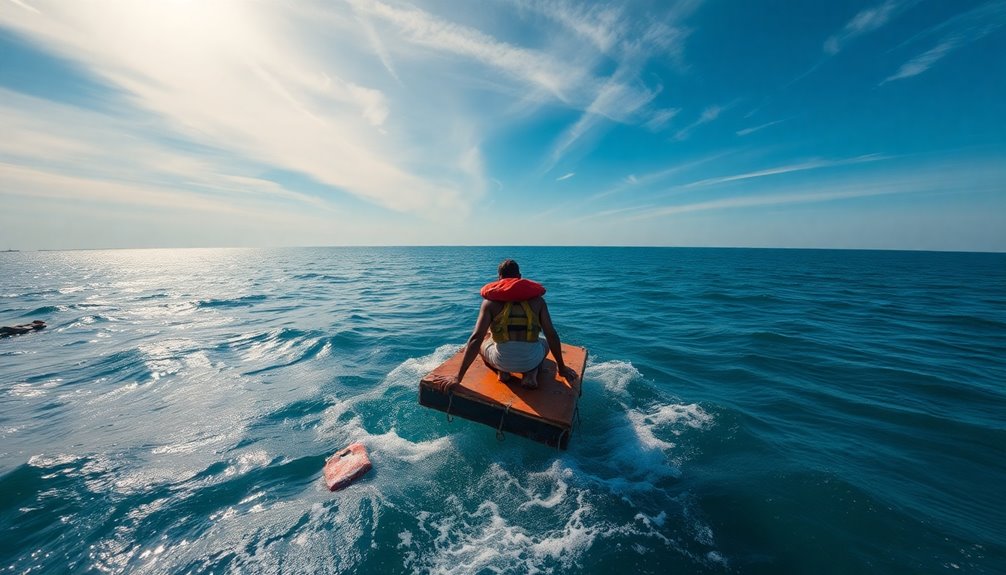During extreme heat, stay hydrated by drinking plenty of water and eating hydrating foods like fruits and vegetables. Find air-conditioned cooling centers nearby to stay cool and reduce health risks. Protect your pets by providing shade, fresh water, and avoiding leaving them in hot cars. Being proactive and aware of these strategies helps keep you safe and healthy. For more tips on managing extreme heat effectively, keep exploring how to stay protected.
Key Takeaways
- Stay hydrated by drinking plenty of water and consuming hydrating foods like fruits and vegetables.
- Locate and utilize nearby cooling centers during heatwaves for relief and medical assistance.
- Protect pets by providing shade, fresh water, and avoiding leaving them in hot vehicles.
- Be aware of urban heat island effects that can intensify temperatures in densely built areas.
- Stay informed through weather alerts and plan ahead to ensure quick access to cooling resources and pet safety.

Have you ever wondered how to stay safe during a heatwave? With climate change impacts escalating, extreme heat events are becoming more frequent and intense. Urban areas, in particular, face a heightened risk because of urban heat islands—these are neighborhoods where concrete, asphalt, and buildings trap heat, making temperatures soar well above those in surrounding rural areas. This phenomenon amplifies the dangers of heatwaves, especially for vulnerable populations like the elderly, children, and those with existing health conditions. Recognizing how climate change influences these urban heat islands is essential to understanding why staying cool and hydrated becomes a top priority during extreme heat. The more densely built-up your city is, the hotter it gets, and that means you need to be proactive in protecting yourself from the heat’s harmful effects.
Urban heat islands increase risk during heatwaves, especially for vulnerable populations. Stay cool and hydrated to stay safe.
One of the simplest yet most effective ways to stay safe is by maintaining proper hydration. When the temperature climbs, your body loses water faster through sweating. If you don’t replenish it, dehydration quickly sets in, leading to symptoms like dizziness, weakness, and even heatstroke. Make it a habit to drink water regularly, even if you don’t feel thirsty. Avoid drinks containing caffeine or alcohol, as they can dehydrate you further. Keep a water bottle with you at all times, especially when you’re outdoors or in places lacking air conditioning. Remember, staying hydrated isn’t just about drinking water; eat hydrating foods like fruits and vegetables, which can also help maintain your fluid levels. Additionally, understanding the impact of urban heat islands can help you better prepare and protect yourself during extreme heat events.
Cooling centers are another essential resource during heatwaves. Many communities set up air-conditioned public spaces where vulnerable individuals can escape the scorching heat. Find out where these centers are located in advance, and don’t hesitate to use them if you start feeling overheated or unwell. These centers not only provide relief but also serve as places where you can receive medical assistance if necessary. If you’re caring for pets, remember they need protection from the heat too. Never leave them in parked cars or in direct sunlight for long periods. Provide shaded areas, fresh water, and bring them indoors if possible. If your pet shows signs of heat distress—such as excessive panting, drooling, or weakness—seek veterinary help immediately.
Incorporating these simple strategies can greatly reduce your risk during a heatwave. Staying informed about local weather alerts, knowing where cooling centers are located, and understanding how climate change impacts urban heat islands empower you to act swiftly. By taking proactive steps to hydrate, seek cool spaces, and protect your pets, you can better navigate the dangers of extreme heat and safeguard your health and well-being when the temperature soars.
Frequently Asked Questions
How Can I Tell if My Pet Is Overheating?
You can tell if your pet is overheating by watching for signs like excessive panting, drooling, and weakness. Check their temperature—if it’s above 103°F, they’re overheating. Look for symptoms like rapid heartbeat, stumbling, or glazed eyes. If you notice these signs, cool your pet down immediately, offer water, and seek veterinary care. Monitoring pet temperature signs and overheating symptoms helps prevent serious health issues in hot weather.
What Are the Best Portable Cooling Devices?
Did you know portable fans can lower your body temperature by up to 15 degrees? For personal cooling, portable fans are your best bet—they’re lightweight, easy to carry, and provide instant relief. Some models even come with misting features or rechargeable batteries. These devices help you stay cool on the go, making them perfect for outdoor activities or emergency situations when traditional cooling centers aren’t available.
Are There Specific Foods That Help With Hydration?
Yes, you can stay hydrated by eating hydrating fruits like watermelon, oranges, and strawberries, which have high water content. Incorporate electrolyte snacks such as nuts, seeds, or electrolyte-enhanced drinks to replenish essential minerals lost through sweating. These foods help maintain your fluid balance and keep you cool during extreme heat. Make sure to eat small, frequent portions and combine them with plenty of water for maximum hydration.
How Often Should I Check on Vulnerable Neighbors?
You should check on vulnerable neighbors at least twice a day during extreme heat. Studies show that community outreach greatly reduces heat-related health issues. Regular contact ensures they stay hydrated, cool, and safe. Stay proactive by monitoring their needs and encouraging emergency preparedness. Your efforts can prevent emergencies, especially for those who might forget to hydrate or lack resources, making a real difference in safeguarding your community.
Can Certain Clothing Help Prevent Heatstroke?
Wearing clothing with UV protection and made from breathable fabrics can help prevent heatstroke. Choose lightweight, loose-fitting clothes that allow air circulation, keeping your skin cool and reducing heat absorption. Light-colored garments reflect sunlight, further lowering your body temperature. Avoid heavy or dark clothes, which trap heat. Combining proper clothing with hydration and shade creates an effective barrier against the heat, helping you stay safe during extreme temperatures.
Conclusion
Staying safe during extreme heat is like steering a scorching desert—you must stay hydrated, find cool spots, and look after your pets. Keep yourself cool, drink plenty of water, and use cooling centers when needed. Remember, your awareness and quick actions can make all the difference. Just like a sturdy umbrella shields you from the sun, being prepared keeps you safe from heat-related dangers. Stay cool, stay safe, and look out for those around you.










